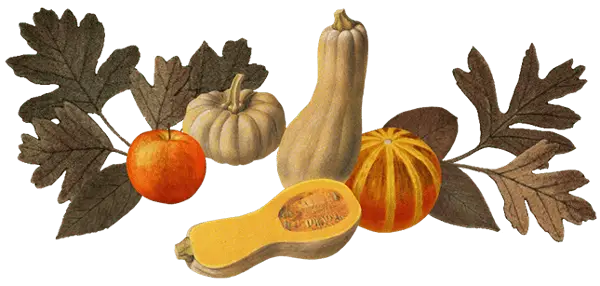

Moving With The Seasons
| Fall, a meditative season of transition and winding down, is a season for the senses. As fall progresses, it seems that all living things adjust accordingly, shedding and shifting for future life cycles to continue. Historically, in the coastal waterways, rivers and streams of North America, fall is a season of heavy migration for several fish species like Pacific salmon, lamprey, herring and the American eel– some traveling up to several thousand miles before returning. Across the continent, animal life moves towards warmer temperatures: monarch butterflies and Canada geese head south to name just a couple. | It is quite possibly the season that draws most on our olfactory senses: the smoky smell of newly harvested chilis roasting in the Southwest, tartness of hot apple cider along the East coasts; pumpkin spice…everything. The sweet smells of decomposition fill the air while the lush greens of summer gradually fade and plants lose chlorophyll, leaving leaves ablaze in golden, yellow, red, orange, and until they eventually fall away. In corn country, pale corn husks color the ground and crunch under feet and milkweeds blow their seeds into the wind, where they’ll rest through the winter for next year. |
Moving With The Seasons
Fall, a meditative season of transition and winding down, is a season for the senses. As fall progresses, it seems that all living things adjust accordingly, shedding and shifting for future life cycles to continue. Historically, in the coastal waterways, rivers and streams of North America, fall is a season of heavy migration for several fish species like Pacific salmon, lamprey, herring and the American eel– some traveling up to several thousand miles before returning. Across the continent, animal life moves towards warmer temperatures: monarch butterflies and Canada geese head south to name just a couple.
It is quite possibly the season that draws most on our olfactory senses: the smoky smell of newly harvested chilis roasting in the Southwest, tartness of hot apple cider along the East coasts; pumpkin spice…everything. The sweet smells of decomposition fill the air while the lush greens of summer gradually fade and plants lose chlorophyll, leaving leaves ablaze in golden, yellow, red, orange, and until they eventually fall away. In corn country, pale corn husks color the ground and crunch under feet and milkweeds blow their seeds into the wind, where they’ll rest through the winter for next year.


Fall Equinox (9.22.22) marks the first day of fall, when day and night are the same lengths, ushering us towards winter. As the days shorten, light wanes and the earth invites us to slow down and find balance. Transformation begins, accented by striking changes to our environments. In forests, decaying leaves, needles, cones, and organic matter pad the ground and will eventually break down into the soil. Readying for hibernation, earth dwellers prepare burrow, some stowing away the season’s bounty for colder months.
As earthly things shift form, fall invites us to reflect on the changes we’ve observed in previous seasons and the transformations we seek. In nature’s regenerative cycles, decomposition is critical: death clears the way for new life to emerge. Perhaps this is why the season has historically been associated with the shift into darkness and with honoring the dead. The greater cycles of deconstruction necessary for Spring’s rebirth commence. Halloween is the secularized vigil of All Saints Day, a Christian tradition of honoring saints that is speculated to fall on November 1 in order to coincide with the tradition of honoring the dead within Samhain, a Celtic festival of harvest. In New Orleans, Halloween, All Saints Day, and Day of the Dead are celebrated through ceremonies, parades, concerts, feasts, and community altars featuring photos, food offerings, and bright marigolds, amongst a myriad of other seasonal specimens and details.


Fall festivals and gatherings celebrate community relationships and the final abundant harvests before winter—and farms are especially active in these. Haybale rides, warming up around firepits, apple cider or apple butter-making parties, pumpkin picking, or carving are fun ways to connect with community and family this season. Autumn’s harvest is indeed hardier and stores longer than summer’s—root vegetables like sweet potatoes, parsnip, carrots, and turnips; varieties of squash and pumpkins; corn, beans, peppers, hearty brassicas, and cabbage – which store well and last long. Fall foods nourish and ground us, and herbs fall in suit. Heartier spices and herbs like burdock root, astragalus or reishi, dandelion root help us prepare for the cold. Our bodies tend to crave warmth this time of year: layers, good company, and warming foods, which are easy to digest in fall. Experiment with broths, stews, and warming spices and herbs – like ginger, coriander, sage, rosemary, clove, allspice, cinnamon, and nutmeg in your cooking. What stokes your inner fire? Fall is a lovely time to revisit routines for self- and community- care. You might host a soup potluck, fire-cider-making party, or make a new hot drink as a treat to start your day.


If you’re gardening through fall, the growing conditions vary across zones. Research your growing zone first to see what will survive the season, and if you can, look for storage varieties, which have been bred to be grown in the fall and stored in the winter. Ensuring active beds have adequate compost or covering unused beds or rows will help protect the soil health through the colder days.
In recent years, the American tradition of “Thanksgiving” has been revisited with a more critical lens, and many Americans have reframed or redefined what the holiday means to them. Recognized by some now as Thanksgrieving, replaced with “Friendsgiving,” or boycotted altogether by others, the tradition beckons us back to the first settlers of Plymouth, MA. To learn more about those early histories and the ways settlers connected with indigenous peoples of America, check out An Indigenous People’s History of the United States by Roxanne Dunbar-Ortiz. Ultimately, the spirit of gratitude is abundant in this season – and it is a good time to give back. On Thanksgiving Day or another, see how you can give back to the community (volunteer at a local food bank or donate time or warm clothing to a shelter, see how local farmers, restaurants, or mutual aid funds are supporting historically oppressed communities in your area.)
As plant life prepares for transformation, we too can begin to identify what we wish to release, clear, and let go of internally this season. What is shifting within you – ready to be shed, this season? How can you design a routine or rhythm around rooting or slowing down? Play with simple rituals that have meaning to you – burning a smudge stick while you steep a homemade tea, pickling and preserving for winter, or collecting windblown treasures like pinecones and tree berries on a sunset hike— and discover your way of finding balance in transition.
Fall Chai
• 1 small fresh burdock root, chopped
• 4-5 reishi mushroom slices
• 2 tbsp. fresh ginger
• 2 tbsp. cut cinnamon root (or 5-6 sticks)
• 2 tsp fennel seeds
• 1 tsp black pepper
• 1 tbsp. cardamom pods
• 1 quart water
1. Combine everything in stock pot.
2. Cover with water and bring to a boil.
3. Reduce to low heat and simmer for about an hour.
4. Strain and enjoy with cream, coconut and a little raw honey!

Written by Circle of Creative Member: Stephanie Yawa de Wolfe

Letter From the Curators
There’s a tangible difference in the air, as summer kisses us goodbye. The heat dissipates into a crisp breeze. The salt in our hair is replaced by falling, crunchy amber leaves. And the smells and flavors of cooling fruits transpire into warming beverages and soups.
On September 22nd, we welcomed autumn with arms wide open, ready to embrace the season of preservation and comfortability. With the summer’s explosion of rainbow bounty, we intentionally move through fall with immense gratitude – reaping the long-lasting benefits that the healthy, sun-soaked soils charmed us with. We start canning the tomatoes, pickling the cucumbers, and slow-cooking the apple cider to accompany us through nature’s colorful and cooling transition. To further engage the senses, we will gather around a Meet a Farmer story dedicated to the beauty of fooding in the south – from soil to table. We feel all the feels, as two farmer-chefs honor the land and food of their ancestors, not only by planting the same crops, but by cooking the same meals.
This season, we hope to learn from our elders and ask about their stories of farming rituals and cooking traditions, while making causes to share and give to that and those around us.
One by one, we pull up our chunky, knit socks, making a vow to move our feet slower this autumn – like the pace of a leaf floating in the wind. We take more Nautical Farms traditional kelp bath soaks, and leave spaciousness for what we don’t know is yet to bloom. Wide-open, glyphosate-free, spaciousness.
So, we invite you to join us this fall, as we adapt our bodies and behaviors to the cycles and rhythms of nature. We invite you to eat more local and seasonal with us – and share your favorite nourishing garden/farm recipes.
In the spirit of gratitude and love,
– Leia Vita Marasovich + Jessie Gardner
– Leia Vita Marasovich
+ Jessie Gardner

